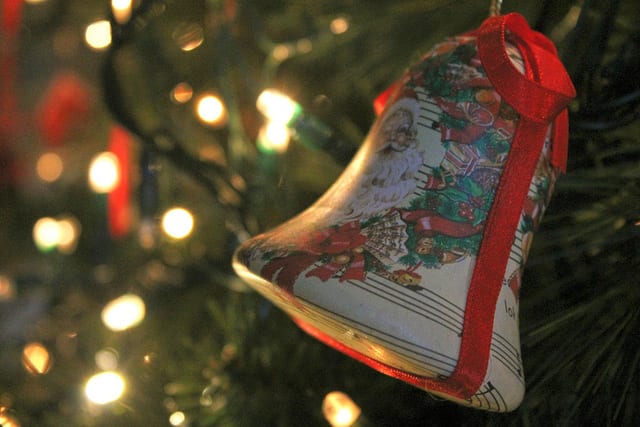
A week or so into the school year, I was at a pizza party for potential Sociology/Anthropology majors, sitting at a table with a few other first years as well as a couple upperclassmen and a professor. We were chatting about Week One, and the upperclassmen were offering tidbits of advice for life at St. Olaf. Things were going well, the food was delicious (shout-out to Basil’s Pizza), and it was turning out to be a highlight of my week.
Then, one of the first years mentioned being in choir, and eventually someone brought up Christmas Fest. I sat there for a moment, puzzled, as everyone at the table broke into either groans of dread or smiles of anticipation. Then, deciding to risk potential humiliation in order to serve my curiosity, I dared to ask, “What’s Christmas Fest?”
Every head turned my direction, and gasps echoed across the table.
One of my first-year comrades turned to me.
“You don’t know what Christmas Fest is?” she said in a tone you would expect to hear from your mother.
I resisted the temptation to hold up my hands in surrender. “No,” I replied. “What is it?”
Thankfully, an upperclassman then came to my rescue and began to explain the phenomenon that is St. Olaf’s most revered event.
Since then, I have learned a great deal about Fest from current St. Olaf students and alumni and have come to understand its far-reaching effect and campus-transforming power. When I first learned of it, however, I pictured something along the lines of what a waterpark in my home town does for Christmas in July … which, believe me, nobody should have to witness.
Christmas Fest is a wonder to behold, or so I’ve heard. Stav Hall serves lutefisk, a mysterious, disgusting rendition of fish and slime. Numerous people over fifty flock to the campus – as if Stav Hall wasn’t already crowded enough. Also, Norwegian sweaters take the place of regular clothes and are assumed to be a norm. All of this leads up to the long-awaited mass concert performance of many music ensembles.
To me, this supposed hype seems a bit over-the-top. Don’t get me wrong, I love Christmas, as most people do, but St. Olaf’s celebration of the holiday appears to go overboard with American-Norwegian fantasies. Of the traditions modeled throughout the week, how many are actually still practiced in Norway? Maybe some, but probably not most. In reality, our rendition of a “Norwegian” Christmas is exaggerated, and it seems to have turned into a money-making strategy rather than a true celebration. Just take a look at the steep price of concert tickets and the fee for the live-stream, not to mention the absurd amount of money a visitor has to pay to eat the dishes in the caf, and you’ll notice a suspicious trend in St. Olaf’s Christmas Fest activities. Despite the grandeur, I can’t help but be skeptical about the Fest’s true intention and whether or not all the hype surrounding it is well-deserved.
To me, the Christmas season is a time of personal reflection and genuine shared joy, not exaggerated, showy attempts of festivity.
Unfortunately, we have watched our society take the simple, magical, spiritual beauty that is Christmas and shove it into a mold of surface-level charm and profiteering commercialism. I fear the day when the holiday’s purity becomes buried underneath St. Olaf’s and others’ attempts at making Christmas a tool for monetary gain.
Christmas Fest seems to be turning into a mirror image of society’s consumerist, flashy holiday spirit, and it needs to be kept in check. Although the significant amount of time that is invested in pulling off an event of this magnitude is impressive, and although I have no doubt that it’s all-in-all a very enjoyable experience (right down to the itchy wool sweaters), Christmas Fest continues to exist as a product of embellished, financial capitalizing.

